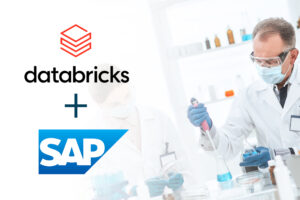What is
Hyper-automation?
We're entering an age where computers will be able to automate almost any process. AI is on the verge of becoming a reality, which means that we are finally moving toward a true cyber-world in which humans and robots coexist alongside one another. Now comes the tricky part: how do you exercise control over machines that can outsmart you? Hyperautomation is an extension or progression from automation, "a self-acting mechanism for performing some operation” by Merriam-Webster's definition. Automation has been around since ancient times, believe it or not, and it's only continued to grow with new technological innovations. With all these advancements in technology, there are boundless opportunities for innovation.
Hyperautomation is a new way of using automation, AI, and machine learning.
The term was first coined in 2019 by Gartner’s IT research and advisory firm.
How does it work?
Hyper-automation provides a framework for the strategic deployment of various automation technologies (including RPA) separately or in tandem and augmented by artificial intelligence and machine learning. Hyper-automation, rather than focusing on a single, off-the-shelf technology or program, entails adding more intellect and taking a systems approach to scaling automation efforts. The technique emphasizes finding the proper balance between automating routine activities and optimizing complex procedures to eliminate steps. The integration of AI and machine learning features allows automation to engage with the world in various ways. OCR, for example, lets automation read text or numbers from paper or PDF files. Natural language processing can extract and categorize the information from the documents, such as determining which firm an invoice is from and what it is for, among other details.
Robotic Process Automation (RPA) and its leading vendors support process mining, digital worker analytics, and AI integration. A hyper-automation platform can sit directly on top of the technologies companies already have.
Where can we find Hyper-automation?
While automation generally refers to machines carrying out tasks, hyper-automation takes things a step further by using artificial intelligence and machine learning to create self-correcting and self-improving processes. This means that they can automate tasks and learn how to do them better over time. In some cases, hyper-automation creates business processes that don't even need human oversight or intervention.
The following are some examples of how companies have been using this technology.
Generally speaking, they fall into two categories: those that involve automation without AI and those that rely on a combination of both types.
01
Transportation
Hyper-automation is already being used in the transportation industry to schedule deliveries and monitor customer service.
Amazon, for instance, uses machine learning techniques to schedule its warehouse employees’ workdays. Uber has an app that automates jobs like dispatching drivers and coordinating payments using Google Maps APIs. Other examples include autonomous vehicles that can map out routes and communicate with other cars on the road.
02
Financial Services
Financial services are where hyper-automation is beginning to have a significant impact. One of the most prominent examples is Wealthfront, which uses algorithms to manage users’ accounts based on their age, income, savings rate, risk tolerance, retirement goals, and other factors. In addition, it automates asset allocation, tax-loss harvesting, and rebalancing.
03
Customer Service
In many cases where hyper-automation works in the customer service sector, companies employ a combination of AI technologies to automate different aspects of their interactions with customers.
For example, Chinese e-commerce giant Alibaba recently unveiled an AI customer service agent that can communicate in English and Chinese; it’s capable of answering questions and engaging in conversations, such as weather or traffic updates.
04
Marketing
Marketing is another area where hyper-automation is beginning to shine. Using machine learning, digital marketing platforms like Moz can analyze keywords, identify the content that will get the best results, and even conduct A/B testing. Marketing automation software can also help marketers target their audience more efficiently by using predictive analytics based on behavioral patterns.
05
Law
Hyper-automation in law refers to the use of robots in certain areas of legal work. For instance, programs like ROSS help with legal research while eliminating the need for expensive paralegals.
One of the most significant impacts on this field is likely to be where AI-powered software handles “Low-Value Legal Tasks” (LVLTs). The idea behind LVLTs is that since lawyers spend so much time on tasks like document review and due diligence, intelligent programs come in handy. IBM is working with law firms on this concept; its Law Q&A tool automatically generates responses based on data from thousands of cases.
06
Usability Testing
Using AI to improve usability testing is another example of how hyper-automation impacts the business world. Companies like UXCam specialize in automated usability testing; they use cameras and eye-trackers to record users’ reactions to sites and products without any need for user input or supervision.
Companies can get objective feedback on their layouts, designs, and navigation schemes by having AI record people trying out their site or product.
07
Customer Engagement
Customer engagement is another area where hyper-automation and AI are beginning to merge. For instance, customer relationship management (CRM) software can monitor customers’ social media interactions to provide better support and personalized offers, often through chatbots.
Other examples include retail stores that use facial recognition to send coupons and special offers to customers as they walk by or shopping sites that use predictive analytics to target their ads better based on users’ viewing habits.
08
Energy Management
A final example of hyper-automation is in the energy sector, where AI performs for automated systems that monitor energy consumption. These include smart meters that automatically detect power outages and gas leaks and smart grids that help balance the load on energy transmission systems.
As these devices become more widespread (and assuming they gain functionality), utilities will better provide their customers with uninterrupted service while reducing congestion on critical infrastructure like transformers.
08
Energy Management
A final example of hyper-automation is in the energy sector, where AI performs for automated systems that monitor energy consumption. These include smart meters that automatically detect power outages and gas leaks and smart grids that help balance the load on energy transmission systems.
As these devices become more widespread (and assuming they gain functionality), utilities will better provide their customers with uninterrupted service while reducing congestion on critical infrastructure like transformers.
Hyperautomation is an inevitable part of the business landscape's future; as AI systems continue to improve, it may be possible for machines to take over more basic tasks within our economy.
However, the full scope of their impact is still unknown; technologies like hyper-automation may change society in inconceivable ways today.
Technology will take many generations to perfect its use in the world, but it is clear that it will be a regular part of everyday life in the future. Like most AI systems, hyper-automation is being developed with good intentions and can positively affect society, both businesses and consumers alike.
What are the benefits of Hyperautomation?
Hyperautomation is a step beyond automation and RPA because it enhances the capabilities of existing technology, including AI and machine learning, to improve the quality and scope of what can be accomplished by software.
For enterprises to remain competitive as we advance, they will need to find ways to use hyper-automation to broaden the scope of their automation initiatives.
Hyper-automation has already begun to show its benefits for companies. It can help boost productivity and save on costs, collect data, use it with digitized processes, and capitalize them on to make better and timelier business decisions.
However, the key to all of this is getting the planning and preparation right.
"Preparation will be critical as we move into an age of hyper-automation,"says Harry Simpson, Managing Director for Digital Factory at Siemens. "It's not only about investing in software and systems but how you work with them."
Organizations must work seamlessly with software and systems that embrace hyper-automation, including compliance with data privacy laws.
The following are some of the advantages of hyper-automation:
01
Reduces the cost of automation in different areas.
02
Allows prioritization of future efforts.
03
Aligns IT and business needs more smoothly
04
Improves security and management.
05
Facilitates the ability to measure the impact of digital transformation efforts.
Businesses are always looking for ways to save on costs, and one of the most effective ways to do that is through automatization. It's especially useful in areas where it is difficult for humans to perform tasks due to safety or precision.
While hyper-automation can have enormous benefits, businesses must prepare to maximize the advantages while minimizing the challenges of this type of technology.
The future of automation and how to prepare fot it
"With the rise of new technologies like hyper-automation, robots on the factory floor, and predictive maintenance, companies have to recognize the benefits and, more importantly, the strategic impact on their business," says Jean-Marc Laouchez, CEO of ILOG.
"Demand for technologists is skyrocketing as people are needed to help companies get on board with hyper-automation.""
While it may be a new term, the concept is not. Automation has been around for centuries and has been a force in the workplace for over two centuries, and Czech writer Karel Capek coined the term robot in his 1920 play RUR. Still, it wasn't until the 1950s that engineers started to build machines capable of automating specific tasks, such as assembling cars or other goods on a production line.
But the advancement of technology has resulted in a steep rise in automation. According to research from McKinsey, "since 1990, the installation rate of robots has grown 8 percent per year worldwide compared with only 1 percent growth in global employment." This trend is not exclusive to blue-collar workers; it includes white-collar professions across all industries. And this automation is not limited to physical jobs.
Software-based automation, or "bots" as they are commonly known thanks to chatbot technology, have arrived and are supplanting a broad range of human functions.
The first wave of bot technology was primal. Still, it has evolved rapidly in the last few years into sophisticated applications that can mimic human dialog with customers, speed up mundane back-office tasks, and even conduct complex financial analyses.
RPA technology has emerged as one of the most notable tools in an enterprise's arsenal for automating manual, rules-based tasks that involve processes such as approvals or reconciliations. But even with it, automation technology is still limited in the types of automation it can achieve -- and this is why hyper-automation is becoming more necessary.
To prepare for hyper-automation, organizations must address three key areas:
01
Compliance with data privacy laws
02
Increased automation in new areas
03
Reduced errors and security risks
Here are some ways in which businesses can prepare for hyper-automation:
01
Getting Executive Buy-in
02
Preparing for Growth
03
Conducting Successful Pilot Projects
Ready to join the automation revolution?
As we move into an age of hyper-automation, the benefits for businesses are clear. Automation will help reduce errors, boost productivity and prepare organizations for growth. However, to get the most out of it, companies must first ensure that they are compliant with the details we mentioned, like data privacy laws, and have the proper infrastructure in place.
By preparing for the future, businesses can make sure that they can take advantage of this transformative technology and improve their bottom line. A company cannot expect hyper-automation to work without executive buy-in or preparation - but if done right, this is one of the best ways businesses can prepare for digital transformation.
If you want help preparing for hyper-automation at your organization, let us know! Our experts will guide you through these changes so that they don't impact productivity and operations too much while helping ensure compliance with data privacy laws and increased security.



